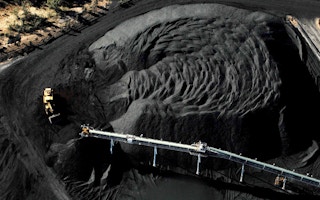Most known reserves of fossil fuels will need to stay unburned to stop temperatures rising beyond a United Nations target that seeks to curb climate-change dangers.
About 531 billion metric tons of carbon have been emitted by burning oil, coal and gas, cutting down forests and making cement since 1750, the UN said today. Capping greenhouse gas output at 840 billion tons gives a 50 percent chance of meeting the UN target of restraining warming below 2 degrees Celsius (3.6 degrees Fahrenheit), it said in its first such estimate.
“This gives you an indication of the space that’s available to us in terms of how much greenhouse gases we can emit to have a chance of stabilizing the Earth’s climate,” Rajendra Pachauri, chairman of the UN Intergovernmental Panel on Climate Change, said today in an interview in Stockholm.
The data suggest the bulk of known fuel reserves will need to stay in the ground to meet the limit. Reserves reported by listed companies, or a quarter of the total, equate to 762 billion tons of carbon-dioxide emissions, said a report this year by the London School of Economics’ climate research unit and nonprofit Climate Tracker Initiative. That amount of CO2 contains 208 billion tons of carbon.
Cumulative carbon emissions must be capped at 800 billion tons to get a 66 percent chance of staying below 2 degrees of warming and 880 billion tons to give a 33 percent chance, the UN said. The conclusions are part of a 36-page summary of the most important scientific knowledge on climate change, processed by the panel in its widest study into global warming.
Widest study
“We are not on a path that would lead us to respect that climate target,” said Thomas Stocker, co-chairman of the group that drafted the UN report released today in Stockholm. Stocker is a climate professor at the University of Bern in Switzerland.
The study strengthens the case for world leaders to set limits to future emissions, said Samantha Smith, head of the climate and energy program of environmental group WWF.
“This gives a clear scientific basis for a carbon budget and an indication of how much carbon we have already used and how much we have left before we start breaking planetary boundaries,” Smith said in an interview in Stockholm. “This has gone from being an interesting piece of modeling to being something that now has solid foundation in the IPCC report.”
The best way to achieve cuts needed to control warming is by putting a price on emissions, Pachauri told reporters. “An extremely effective instrument would be to put a price on carbon.” he said. “It’s only through the market that we might be able to get a large enough and a rapid enough response.”
Carbon budget
The idea of a global carbon budget was touted in 2009 by scientists including 20 Nobel Prize winners. Calling themselves the Nobel Laureates Symposium, they signed a memorandum that said a carbon budget that set limits on global emissions was needed for 2020 and 2050. Pachauri was among the signatories.
Even if emissions from cement making and deforestation were halted, a maximum of 309 billion tons of fossil fuel-related emissions would be possible before the 50 percent chance of meeting the 2 degree goal is lost, according to Bloomberg calculations based on the UN report’s numbers. By comparison, cumulative carbon emissions from making cement and burning fossil fuels combined total 365 billion tons already.
The UN Environment Program estimates humans emit an annual 50 billion tons of carbon dioxide from all sources. That’s about 13.6 billion tons of carbon with oxygen’s mass stripped out.

















